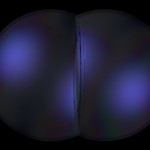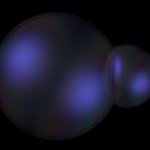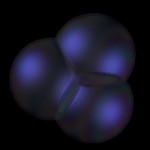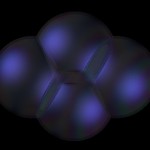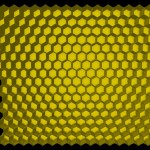Coming back to a recent posting about modeling cellular structures, I learnt from a book by Philip Ball (Shapes, Nature’s Patterns: a tapestry in three parts, Oxford University Press from 2007) that soap bubbles can serve as a simple models of cells. (This book will be cited several times in future postings…). So I started to draw simple groups of soap bubbles by using blobs in a similar way as figured out in the posting on cellular structures.
- Two bubbles
Smaller bubbles have higher internal pressures, so they will expand into larger bubbles.
- Two uneven bubbles
Here comes a group of three bubbles …
…and here a group of 4. (Does it start to look somehow familiar to cells?)
When we imagine a layer of such uniform bubbles, we will end up with a classical honeycomb…
…which again resembles the shape of some cellular arrangements.

